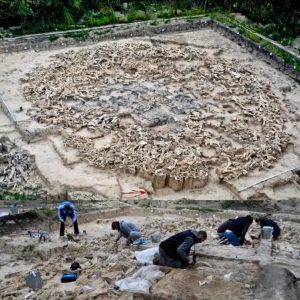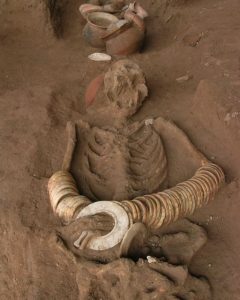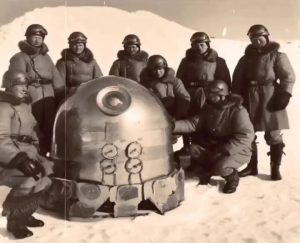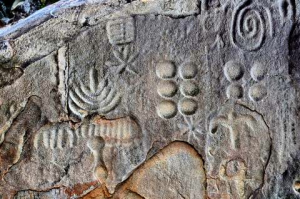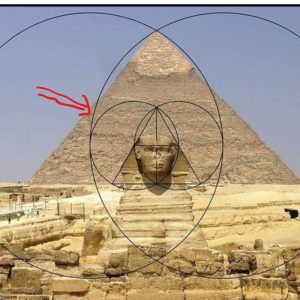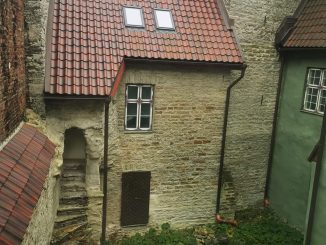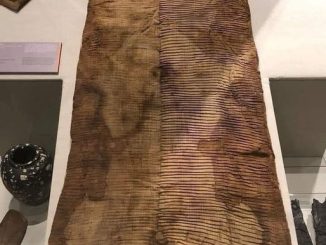
The Sungirskaya (Dobroselskaya) site near the city of Vladimir, discovered and studied by O.N. Bader in 1956-1977, is inextricably linked with the problem of the Kostenki-Streltsy culture.
Unlike the Kostenki monuments, the collections of stone products collected here number tens of thousands of objects; a rich set of bone tools, jewelry, and works of art have also been discovered. The Late Paleolithic burials discovered at the site are of exceptional scientific interest.
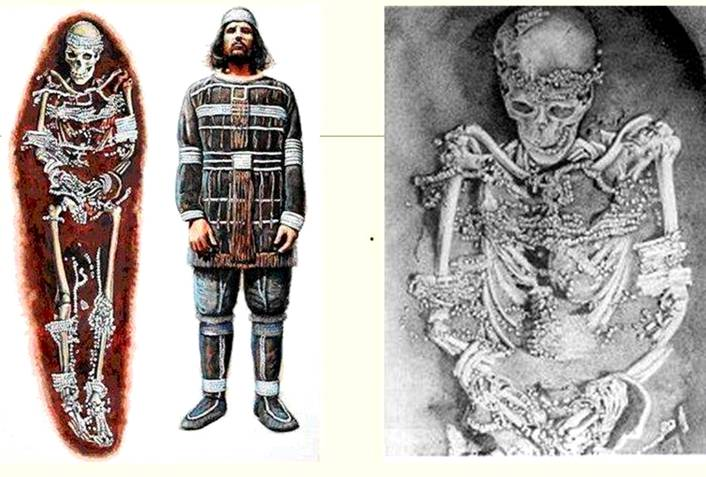
In the stone industry of Sungir (characteristic given according to O.N. Bader, 1978), cores of parallel removal are accompanied by prismatic, less often disc-shaped. The technique of flat double-sided retouching was used much less frequently than in the Streltsy monuments of Kostenok; rather, the techniques of incisal chipping and scaly undercutting were used much more often. There is vertical retouching. The assortment of tools is dominated by typically Late Paleolithic forms, scrapers, chisel-shaped tools (82, IS, 10, 21), and burins. It is important to note the appearance of such tools as blades with a blunted edge (82,1,2).
The scraper environment characteristic of Kostenok types 1, V is absent (82, 5, 4, 7, 8). The Sungir Revtsy do not find direct analogies there either (82, 22, 24, 25). Tools of the Mousterian categories are mainly represented by side scrapers (82,11,15). As in Kostenki, longitudinal single-edged tools predominate. Significantly fewer points. Leaf-shaped, bilaterally processed points are also rare in Sungir, represented by triangular tips with a concave base (82, 5, 6, 9) and points with a convex base (82, 10). The latter differ from Kosteik’s points with a convex base by being smaller in size.
The bone inventory of Sungir is rich and varied. The tools are represented by points made of bone and tusk, spearheads made of tusk, hoees made of reindeer antler, numerous fragments of bone rods, etc.
The number of bone and stone decorations, originating both from the cultural layer itself and especially from burials, exceeds 10 thousand items. These are ordinary pendants made from arctic fox fangs, beads – flat, with a hole at the edge, barrel-shaped, drilled in the central part, tusk pendants of various shapes, sometimes decorated with rifling, flat slate pendants, plate bracelets made of mammoth ivory.
The age of the Sungir site is determined with sufficient confidence by the end of the Young-Sheksna interglacial. This is evidenced by the occurrence of cultural soil in the upper part of the buried soil, defined as Bryansk, and by observations indicating that the permafrost processes that deformed the cultural layer are associated with a later time (obviously, the Ostashkovo climatic minimum) and, finally, the available radiocarbon dates dates of the order of 24-25 thousand years ago. days Data on the age, as well as the generally more developed appearance of the inventory, make it possible to place Sungir in time after the second chronological stage of the Streltsy culture in Kostenki.
